To use policy maps, the switch must be running the LAN Base image.
A class map is a mechanism that you use to name a specific traffic flow (or class) and to isolate it from all other traffic.
The class map defines the criteria used to match against a specific traffic flow to further classify it. The criteria can
include matching the access group defined by the ACL or matching a specific list of DSCP or IP precedence values. If you have
more than one type of traffic that you want to classify, you can create another class map and use a different name. After
a packet is matched against the class-map criteria, you further classify it through the use of a policy map.
A policy map specifies which traffic class to act on. Actions can include trusting the CoS, DSCP, or IP precedence values
in the traffic class; setting a specific DSCP or IP precedence value in the traffic class; or specifying the traffic bandwidth
limitations and the action to take when the traffic is out of profile. Before a policy map can be effective, you must attach
it to a port.
You create a class map by using the class-map global configuration command or the class policy-map configuration command. You should use the class-map command when the map is shared among many ports. When you enter the class-map command, the switch enters the class-map configuration mode. In this mode, you define the match criterion for the traffic
by using the match class-map configuration command.
You can configure a default class by using the class class-default policy-map configuration command. Unclassified traffic (traffic specified in the other traffic classes configured on the
policy-map) is treated as default traffic.
You create and name a policy map by using the policy-map global configuration command. When you enter this command, the switch enters the policy-map configuration mode. In this mode,
you specify the actions to take on a specific traffic class by using the class , trust , or set policy-map configuration and policy-map class configuration commands.
The policy map can contain the police and police aggregate policy-map class configuration commands, which define the policer, the bandwidth limitations of the traffic, and the action
to take if the limits are exceeded.
To enable the policy map, you attach it to a port by using the service-policy interface configuration command.
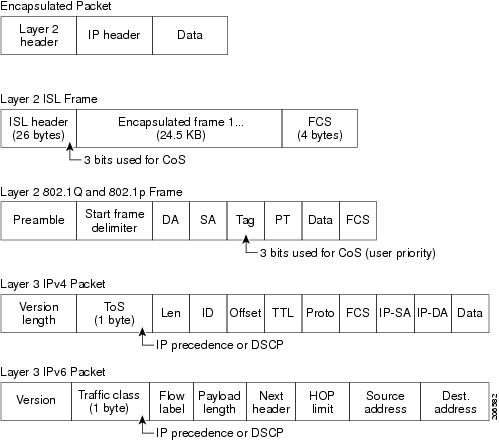
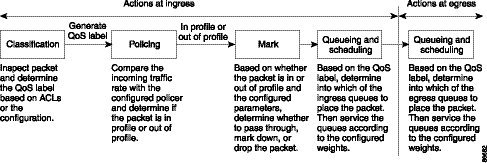

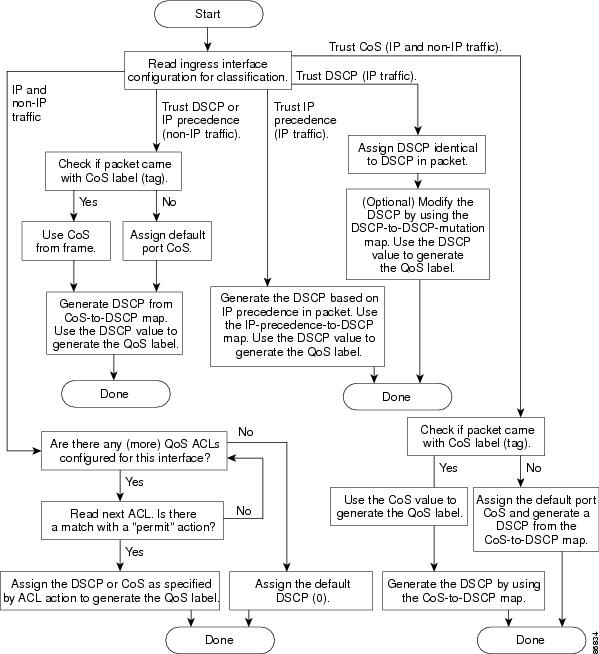
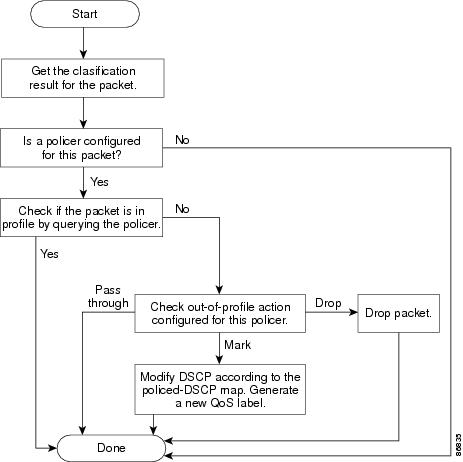
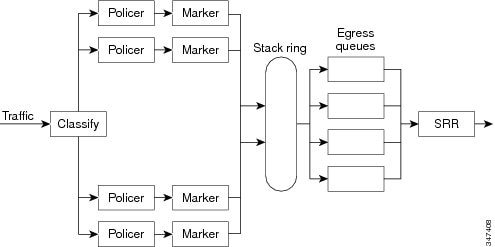
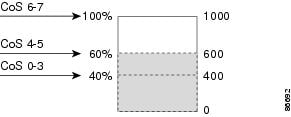
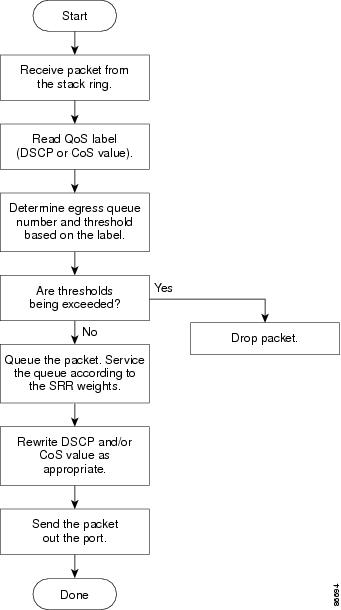
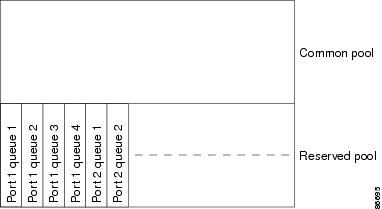
 Feedback
Feedback